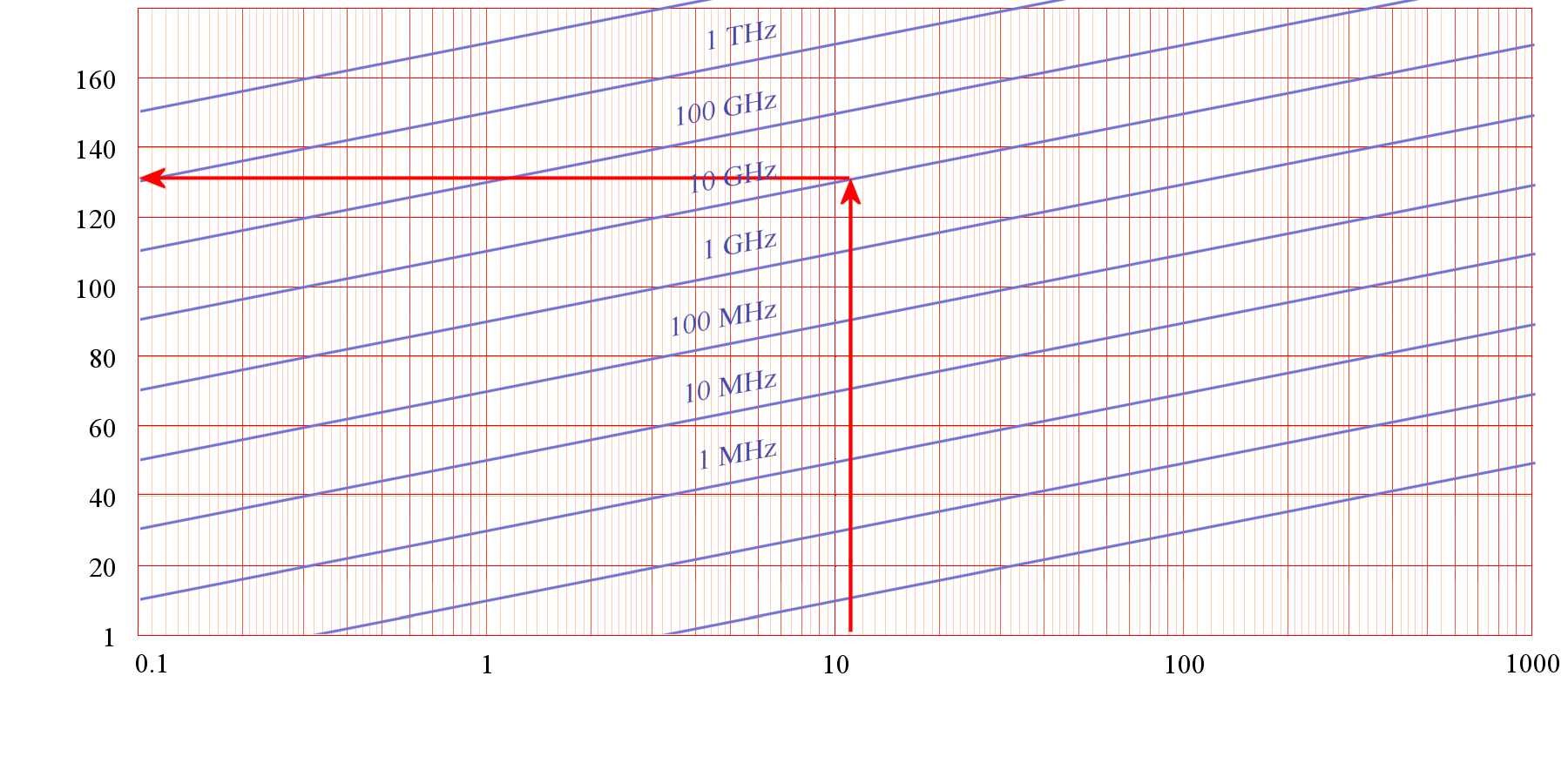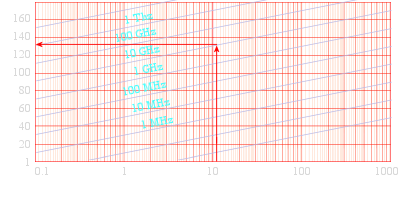Free-Space Path Loss (FSPL)
In telecommunication, free-space path loss (FSPL) is the loss in signal strength of an electromagnetic wave that would result from a line-of-sight path through free space, with no obstacles nearby to cause reflection or diffraction. The FSPL appears in vacuum under ideally conditions, e.g. a radio communication between satellites. It is a criterion for the derivation of the radar equation too.

Figure 1: Nondirectional power density diminishes as geometric spreading

Figure 1: Nondirectional power density diminishes as geometric spreading
Calculation of free-space path loss
If high-frequency energy is emitted by an isotropic radiator, than the energy propagate uniformly in all directions. Areas with the same power density therefore form spheres ( A = 4πR² ) around the radiator. The same amount of energy spreads out on an incremented spherical surface at an incremented spherical radius. That means: the power density on the surface of a sphere is inversely proportional to the surface area A (or the square of the radius R) of the sphere.
The expression for FSPL actually encapsulates two effects. Free-space power loss is proportional to the square of the distance between the transmitter and receiver, and also proportional to the square of the frequency of the radio signal. Firstly, the spreading out of electromagnetic energy in free space is determined by the inverse square law, i.e.
| S = | Pt | in [W/m2] |
Pt = transmitted power [W] S = is the power per unit area at distance R = Distance transmitter - receiver [m] |
(1) |
| 4 · π · R2 |
The second effect is that of the receiving antenna's aperture, which describes how well an antenna can pick up power from an incoming electromagnetic wave. For an isotropic antenna, this is given by
| Pr = | S · λ2 | in [W] |
Pr = received power [W] S = nondirectional power density λ = transmitted wave length [m] |
(2) |
| 4 · π |
The total loss is given by the ratio:
| FSPL = | Pt | = | (4 · π · R)2 | = | (4 · π · R · f )2 | fr = transmitted frequency c = the speed of light in a vacuum, 2.99792458 · 108 meters per second |
(3) |
| Pr | λ2 | c2 |
which can be found by combining the previous two expressions.

Figure 2: Nomogram to estimate the free space loss
A maritime Radar for navigation uses the X-Band (this is about 9.5 GHz).
| FSPL = 20 Log | 4 · π · 11000 [m] · 9.5 · 109[Hz] |
| 3 · 108 [m/s] |
As you can see: the decimal powers we can ignore: It will be shortened.
In 11 km the Free Space Path Loss is about 133 Decibels).
(Remember: this is the One-Way-Loss only! The radar must calculate twice the distance.)

